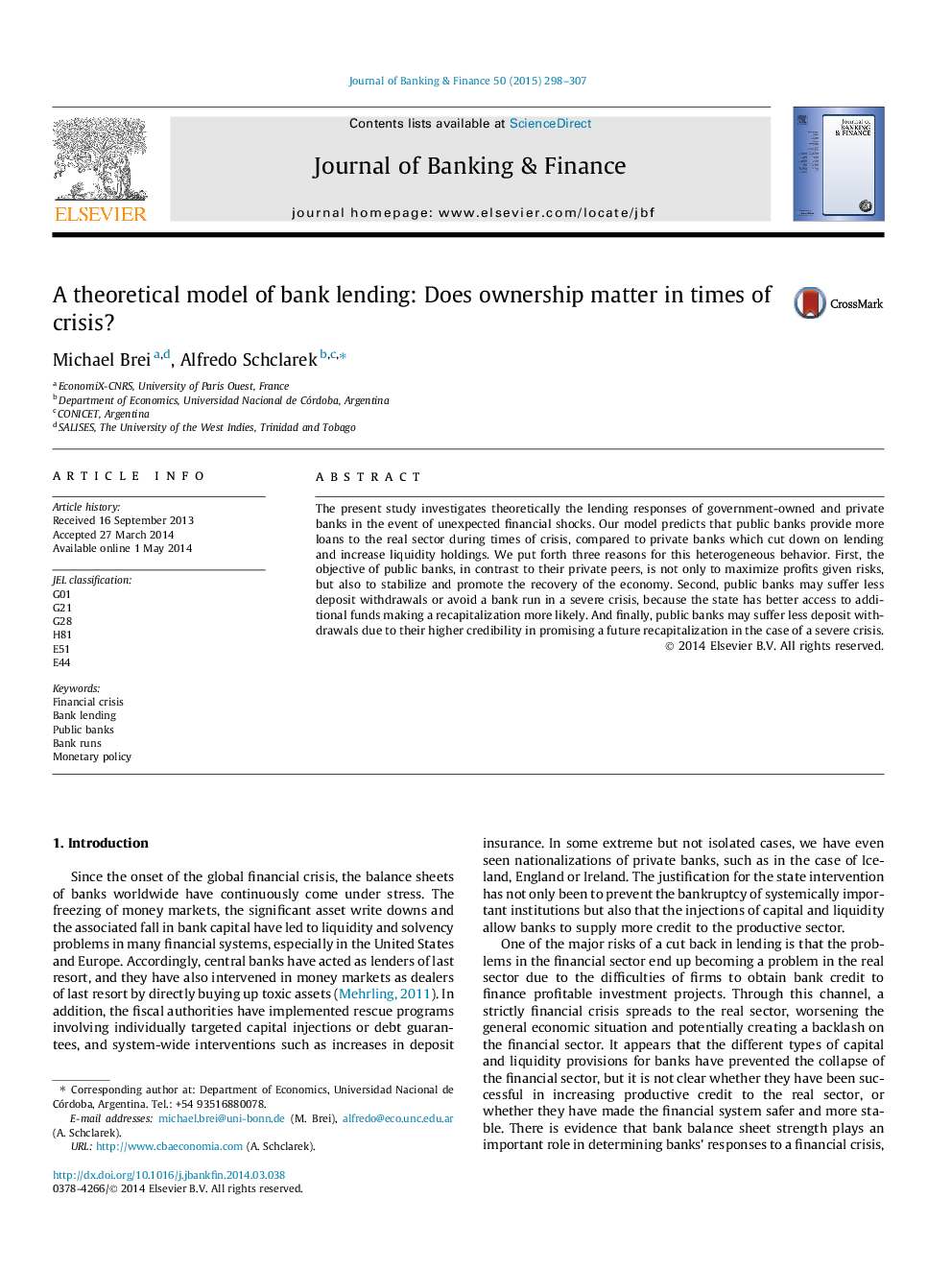| Article ID | Journal | Published Year | Pages | File Type |
|---|---|---|---|---|
| 5088579 | Journal of Banking & Finance | 2015 | 10 Pages |
â¢We model government-owned and private bank lending in normal and crisis times.â¢During a crisis, bank lending is reduced in comparison to normal times.â¢During a crisis, government-owned banks lend more than private banks.â¢Government-owned banks can play an active counter-cyclical role.
The present study investigates theoretically the lending responses of government-owned and private banks in the event of unexpected financial shocks. Our model predicts that public banks provide more loans to the real sector during times of crisis, compared to private banks which cut down on lending and increase liquidity holdings. We put forth three reasons for this heterogeneous behavior. First, the objective of public banks, in contrast to their private peers, is not only to maximize profits given risks, but also to stabilize and promote the recovery of the economy. Second, public banks may suffer less deposit withdrawals or avoid a bank run in a severe crisis, because the state has better access to additional funds making a recapitalization more likely. And finally, public banks may suffer less deposit withdrawals due to their higher credibility in promising a future recapitalization in the case of a severe crisis.
